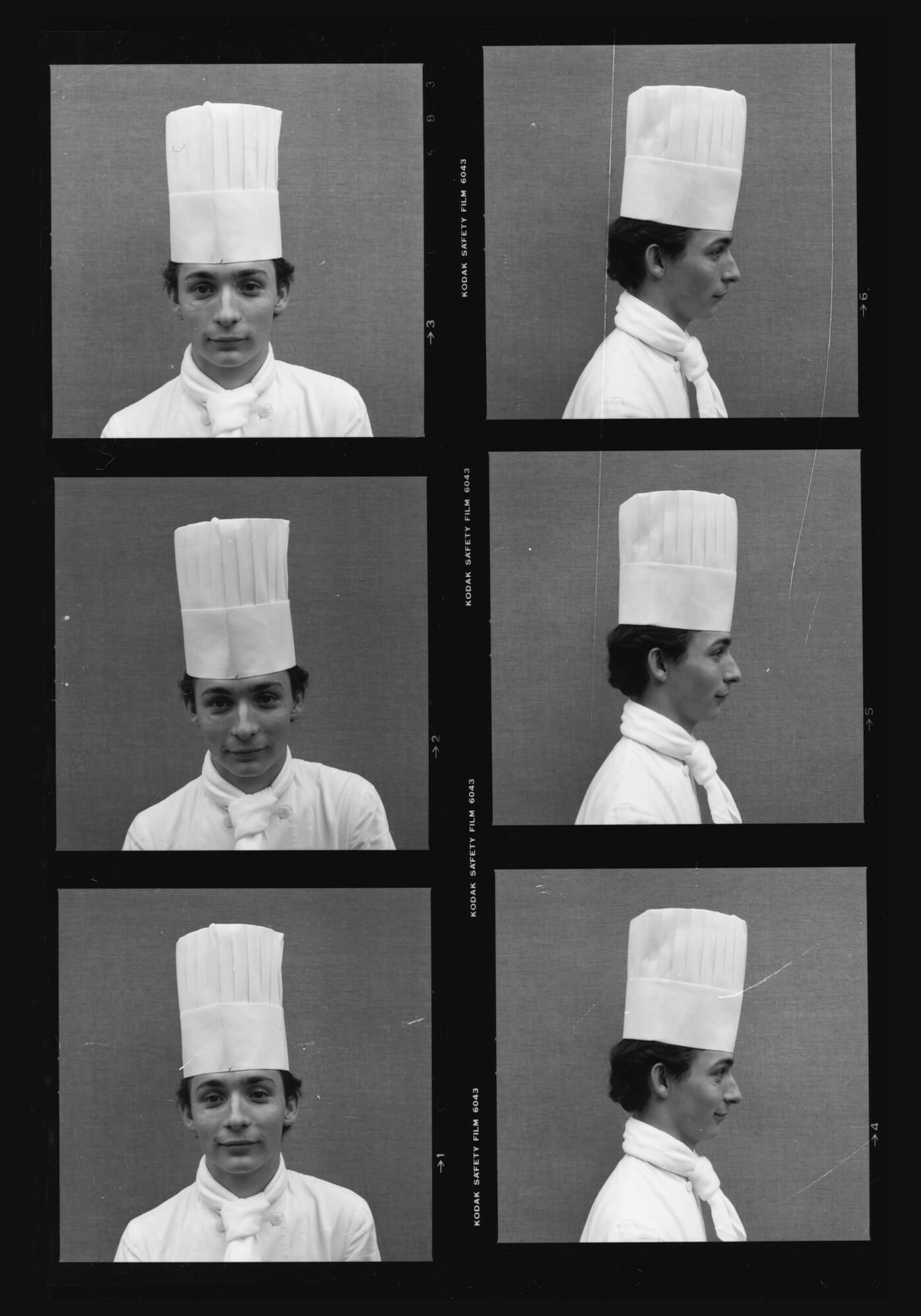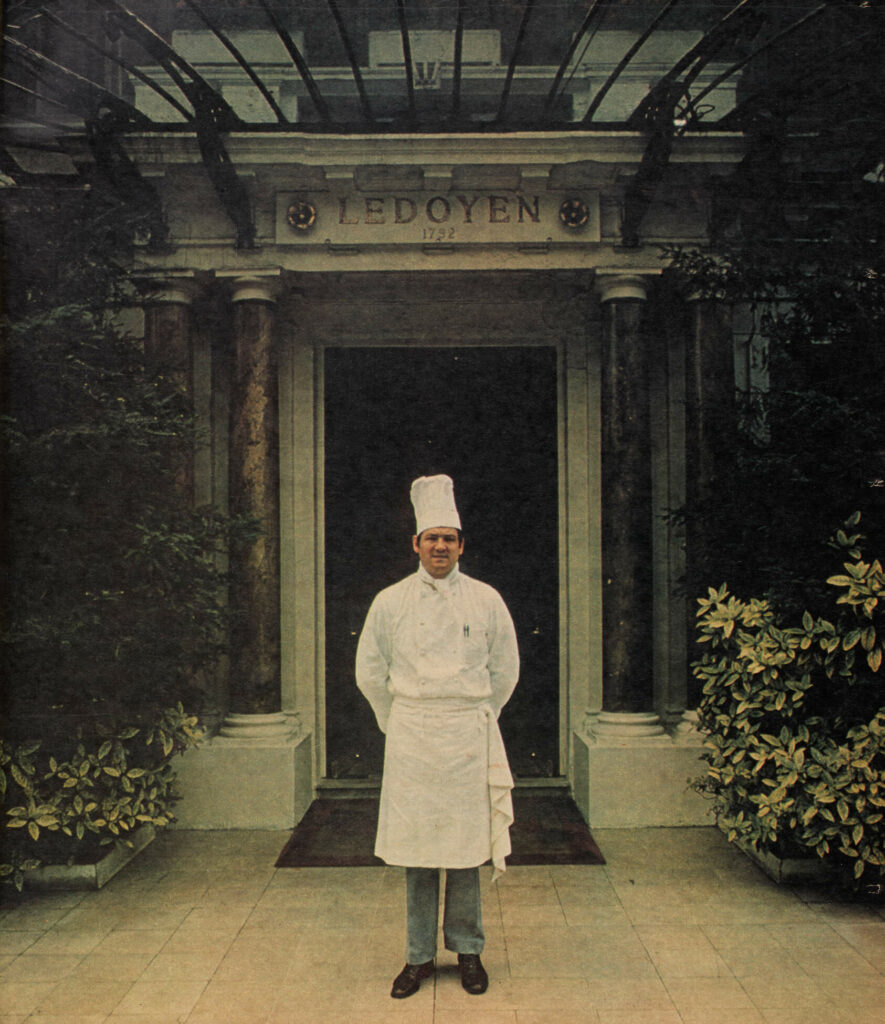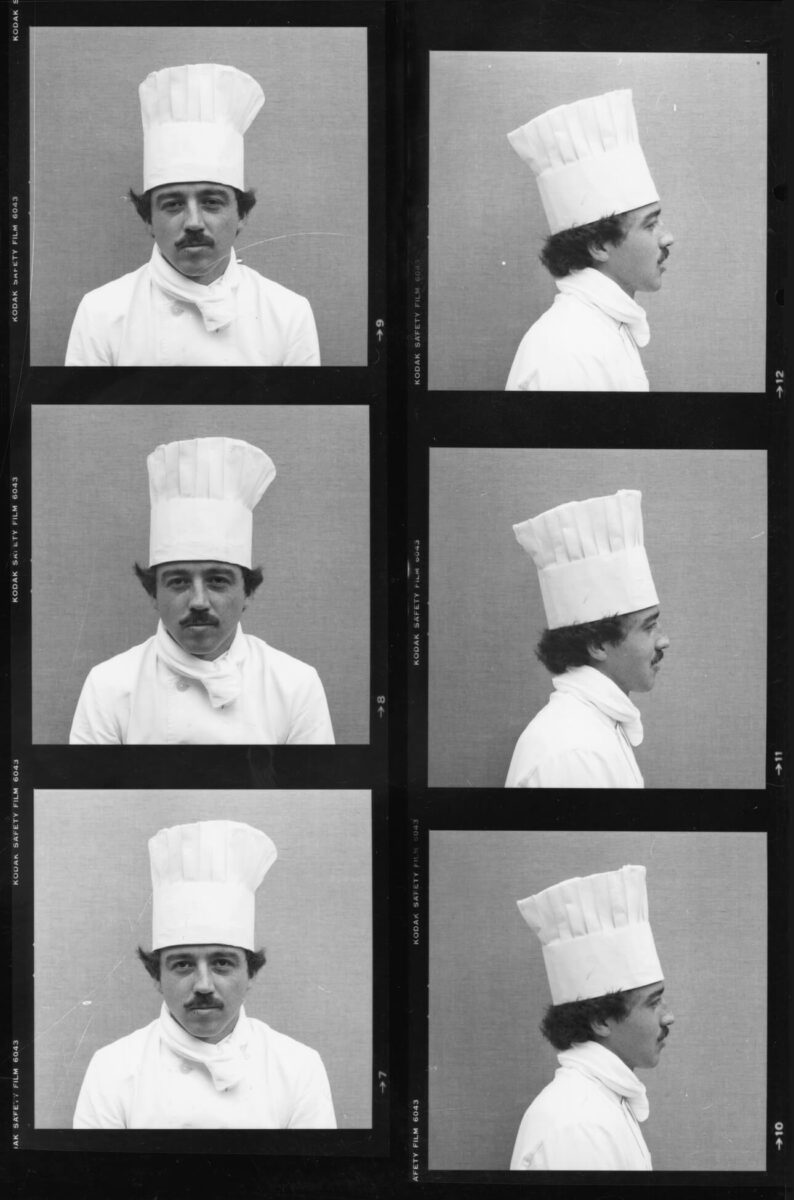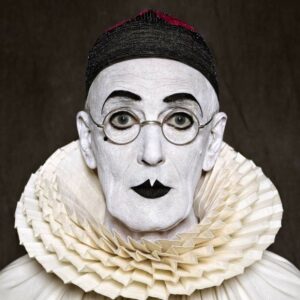Ledoyen Series, Working Notes 1979

Arnaud Maggs, Ledoyen Series, Working Notes (detail), 1979
20 gelatin silver contact prints, 40.3 x 40.3 cm (each)
Library and Archives Canada, Ottawa
Ledoyen Series, Working Notes is a series of black and white profiles and frontal views of twenty Parisian chefs and sous-chefs. First exhibited at YYZ, an artist-run gallery in Toronto, Ledoyen Series, Working Notes marks a pivotal moment for Arnaud Maggs. It was this shoot in Paris that prompted the artist to develop a procedure for photographing that factored in the number of sitters, the kinds of poses he wanted—frontals and profiles, for example—and the number of exposures on a roll of film. His sequential approach to image making with this series would come to define his approach to portraiture, introducing more explicit themes of duration and time that would subsequently reappear throughout his practice.


Maggs was initially drawn to the chefs for their formal potential. “Because they would be all dressed the same way,” he explained, “it would hold the work together in a graphic sense.” The idea came to him following an editorial commission he received from Canadian Magazine for its November 12, 1977, issue to photograph the head chef of the Ledoyen. The result of his shoot was a full-page image of a chef standing in front of the restaurant’s doorway. The chef’s uniform—including his tall hat—stands out in contrast to the darkness of the doorway. Ledoyen Series, Working Notes sits at an intersection between the editorial portraiture Maggs did for magazines and the systems-based portraits he made as an artist. Likewise, it signals the impact that his early careers in graphic design and commercial photography had on his visual language as an artist.
Maggs had organized a session to photograph the chefs outside of Restaurant Ledoyen on the iconic Avenue des Champs-Élysées in Paris. Intending to repeat the approach he had taken with 64 Portrait Studies, 1976–78, Maggs planned to photograph multiple rolls per chef and later edit and select appropriate frames to arrange in a larger grid. But as the chefs began to queue for their turn in front of the camera, he realized time would be an issue. He needed to adapt his plan. “My first thought was ‘the soup will burn!’” he recalled. “I quickly realized that I didn’t have the luxury of executing my first plan.” Maggs made a calculation based on the twelve exposures he had on each roll of 120 film and determined that he would photograph two chefs per roll. Each person would be captured three times in profile and three times looking straight ahead.
Maggs received contact sheets back from the lab neatly cut into strips of three. “I was surprised,” he admitted, “because it made them a sequential work, and I had never thought of working that way.” It was after seeing the frames arranged in strips of three that he “decided I had to show them all.” Unlike with the photographs that comprise 64 Portrait Studies, Maggs chose not to enlarge the Ledoyen images. He printed the work in the darkroom of artist Suzy Lake (b.1947). “He was disappointed by the details in their uniforms when printing his standard portrait grid sizes,” she explains. “But soon he became very excited by the contact sheet format.” In this work, in addition to alternating between profiles and frontal views, Maggs’s arrangement was informed by the processes and procedures of photography itself.

 About the Author
About the Author
 More Online Art Books
More Online Art Books
 Acknowledgements
Acknowledgements